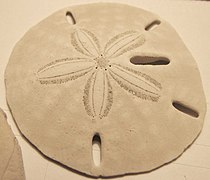My Colombian trip does not begin well. In
fact, as I hobble from one end of the Botgotá airport to the other end, I
think, “This is a nightmare.”
I’d had my
doubts about going ahead with this two week trip to the coast of Colombia, that I’d been planning for months, but that was
before I was afflicted with painful plantar fasciitis in my left foot. In spite
of the exercises and a cortisone injection days before, the pain stubbornly
persists. Ignoring the warning signs, I decide to take a chance. After all, plane
tickets are bought and my friend, Margery in Cartagena, is expecting me.
An airline official
calls out to the passengers as we descend the plane, “Cartagena? This way.
Hurry.” She presses a sticker onto my blouse. “Go down this hall to
Immigration.” Several of us rush down the corridor, but with the pain in my
foot I can’t keep up with the others. I ask someone. “Imigración”?
 |
| Bogotá airport |
“Al fondo, at the end” Is the answer.
Of course, I
think, it would be al fondo.
A huge mass of
passengers wait in the long curving lines at immigration. I ask an airline
official, “Which line?” She directs me to the “preferential" line, somewhat
shorter than the other lines. We crawl forward inches at a time. Finally, my
number.
With the official
stamps on my passport, I look about me. Now where? Signs are scarce. I ask a
guard, “Which way to my Cartagena connection?”
He points in a
general direction, “Al fondo, to the
second floor, turn right and then al
fondo.”
Al fondo rhymes with
Macondo and the tune repeats itself in my head. Macondo, al fondo…to the catchy
song celebrating the birthplace of Gabriel García Marquez, Nobel Colombian
author of “One Hundred Years of Solitude.”
 |
| Al fondo |
Now on the
second floor, I again ask for directions to the gates for national flights.
When I arrive at the security check line, I realize I do not have a boarding
pass for this flight. I’m directed to an airline desk and step to the front of
the line. “Excuse me but my flight is about to leave and I don’t have a
boarding pass.”
“What
is your flight code?”
“I
don’t know.” I´d left my itinerary with all my flight information on my copy
machine at home. (I know. I could have
entered the info on my cell phone.)
Thank god for computers. They locate my information with my name and issue me a boarding pass. Will I make my connection? I imagine that this is the last flight to Cartagena tonight.
I
flash my boarding pass. “What gate number?” I ask.
“Eleven. Al fondo.” I want to scream.
I run along another
very long corridor, looking at the gate numbers. 1,2,3,…where in the heck is
eleven? Will I make it?
Finally. Gate
eleven. Still open. I rush along the tunnel to the open door of the plane,
where a smiling stewardess greets me. I tell her of my odyssey. “Everything in
this airport,” I tell her, “is al fondo. I
must have walked five kilometers the whole length of this airport,”
She laughs and
looks at my boarding pass. And laughs again. “Al fondo,” she says pointing to my seat at the back of the plane.
















